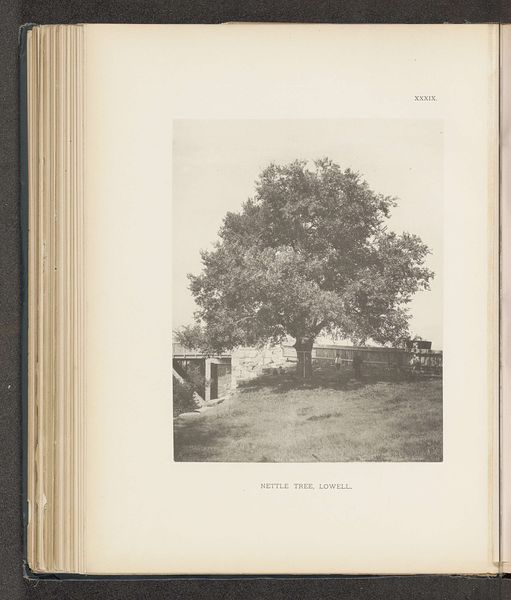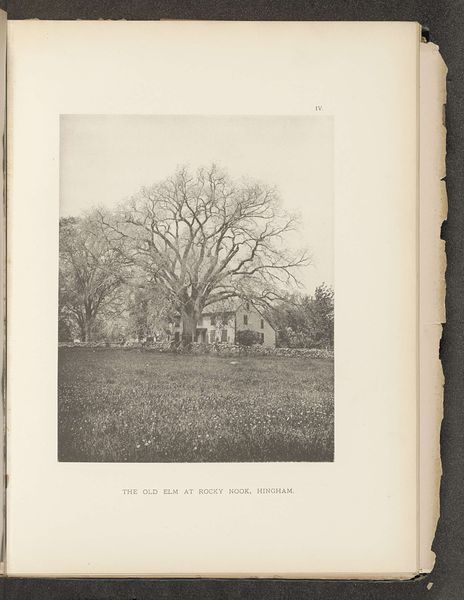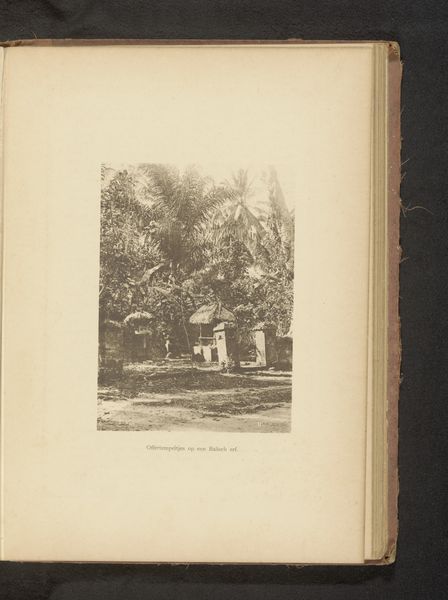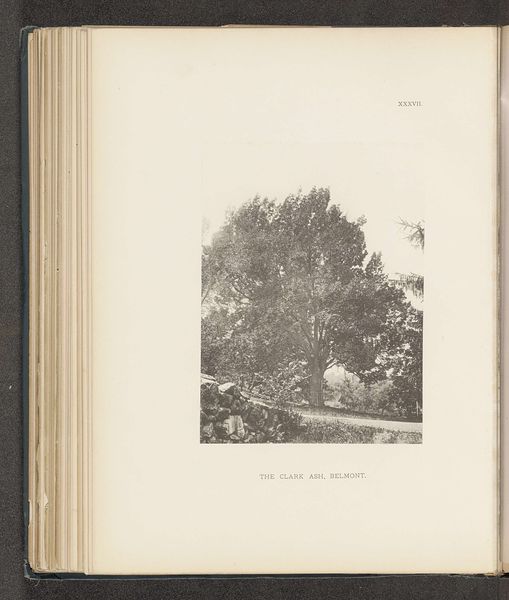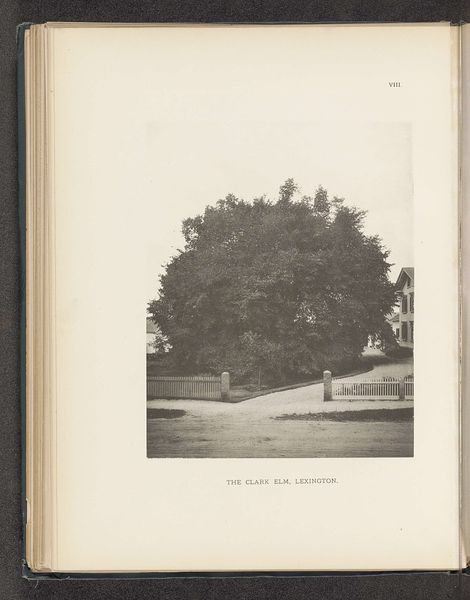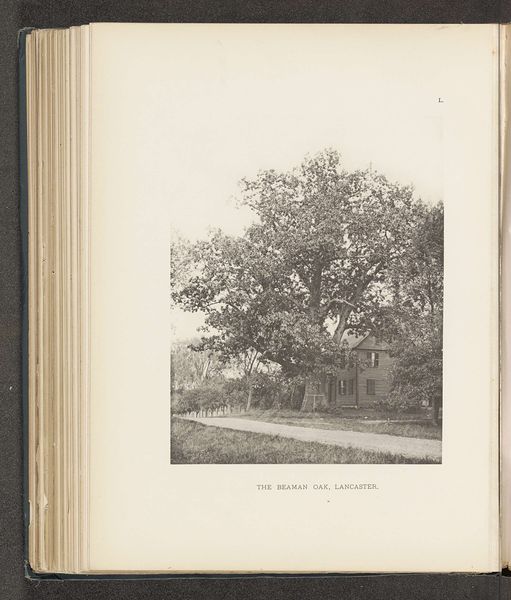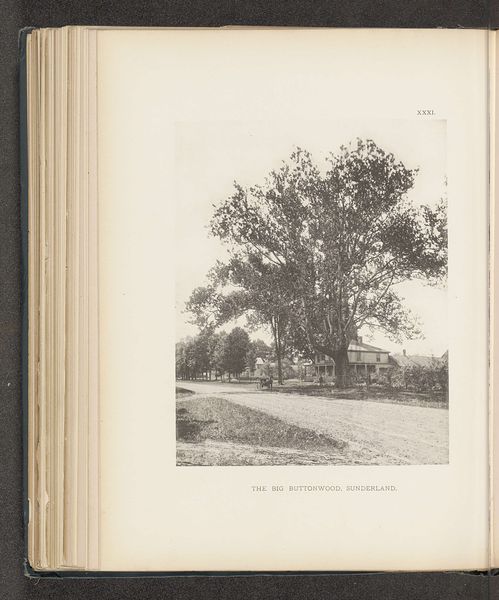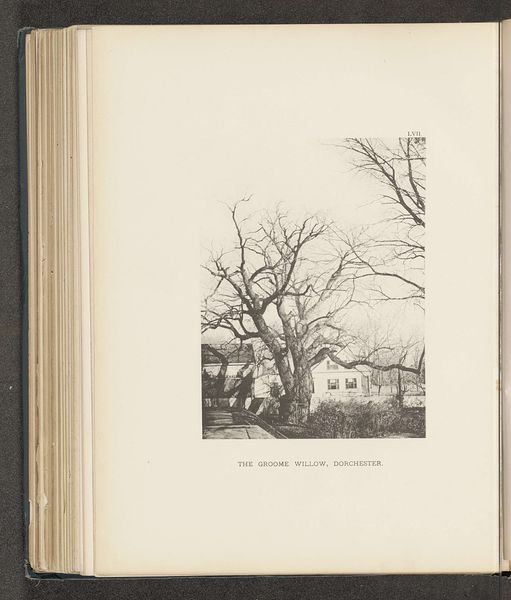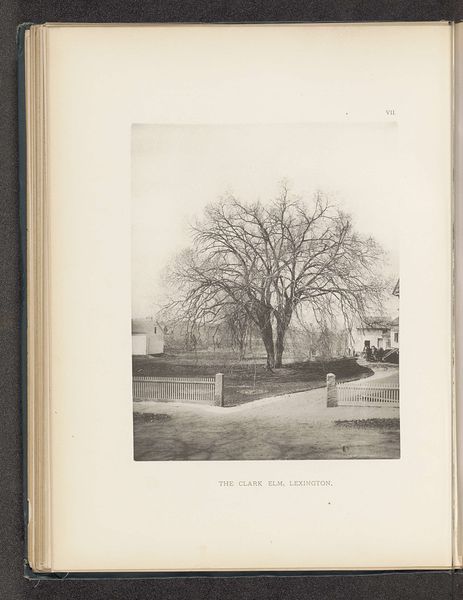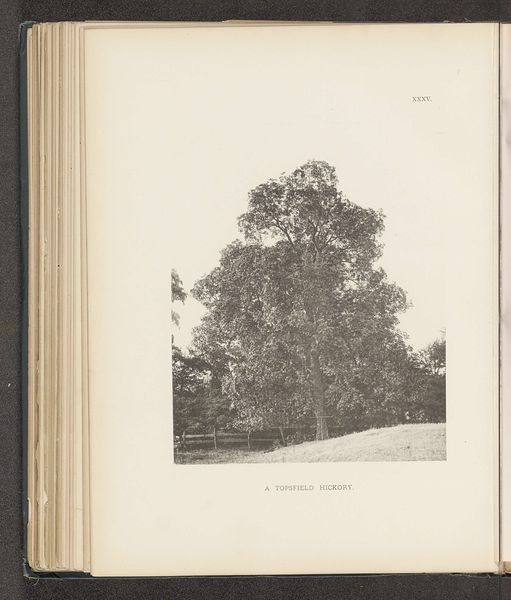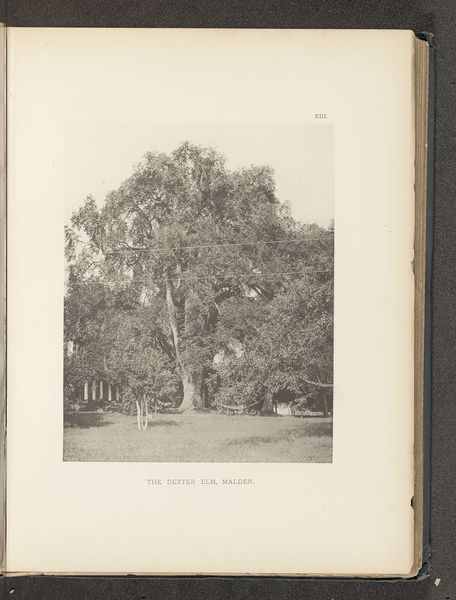
print, photography
# print
#
landscape
#
photography
#
realism
#
building
Dimensions: height 179 mm, width 144 mm
Copyright: Rijks Museum: Open Domain
Henry Brooks made this photograph of The Willard Elm in Deerfield. Photography, as a method of mechanically capturing images, was embraced for its documentary value. While some photographers aimed to emulate painting, others focused on the camera's unique capacity to record the world with an exacting level of detail that handcrafts could not replicate. The darkroom process, the selection of paper, and the printing itself, all contribute to the photograph's final appearance. Here, the monochrome tones and crisp resolution highlight the elm's imposing size and age, set against the backdrop of a human dwelling. The artist has used the reproducibility of photography, in contrast to the singularity of other art practices. This makes photography more aligned to industrial means of production and consumption. Photographs have a social significance. This can be seen in their ability to capture and share a specific moment in time and place with a wide audience, thereby democratizing image making. The image of the tree, in its monumental state, represents the cultural fascination with America's natural heritage, at a time when it was in danger of disappearing due to industrialization.
Comments
No comments
Be the first to comment and join the conversation on the ultimate creative platform.
